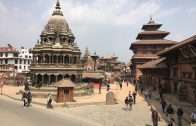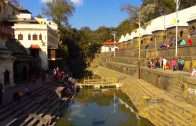Angkor Wat
Lost in the Cambodian jungle for over four centuries and put back on the map by a French explorer in 1860, Angkor Wat is one of nearly one hundred temples representing the homes of Hindu gods.
Angkor is a region of Cambodia that served as the seat of the Khmer empire, which flourished from approximately the ninth century to the thirteenth century. The word Angkor is derived from the Sanskrit nagara, meaning “city”. The Angkorian period began in AD 802, when the Khmer Hindu monarch Jayavarman II declared himself a “universal monarch” and “god-king”, until 1431, when Ayutthayan (Thai) invaders sacked the Khmer capital, causing its population to migrate south to the area of Phnom Penh. The ruins of Angkor are located amid forests and farmland to the north of the Great Lake Tonle Sap and south of the Kulen Hills, six kilometres from Siem Reap, and are a UNESCO World Heritage Site. The temples of the Angkor area number over one thousand, ranging in scale from piles of rubble scattered through rice fields to the magnificent Angkor Wat, said to be the world’s largest single religious monument. Many of the temples at Angkor have been restored, and together, they comprise the most significant site of Khmer architecture.
It is widely believed that the abandonment of the Khmer capital occurred as a result of Siamese invasions. Ongoing wars with the Siamese were already sapping the strength of Angkor toward the end of the 13th century. In his memoirs, Zhou reported that the country had been completely devastated by such a war, in which the entire population had been obligated to participate. After the collapse of Angkor in 1431, many persons, texts and institutions were taken to the Thai capital of Ayutthaya in the west, while others departed for the new centre of Khmer society at Longvek further south, though the official capital later moved to the present site of Phnom Penh.
Some scholars have connected the decline of Angkor with the conversion of Cambodia to Theravada Buddhism following the reign of Jayavarman VII, arguing that this religious transition eroded the Hindu conception of kingship that undergirded the Angkorian civilization. Other scholars attempting to account for the rapid decline and abandonment of Angkor have hypothesized natural disasters such as earthquakes, floods, or drastic climate changes as the relevant agents of destruction. Research by archaeologists suggests that the decline may have been due to a shortage of water, tree-ring chronologies indicate severe periods of drought across mainland Southeast Asia in the early 1400s, raising the possibility that Angkor’s canals and reservoirs ran dry and ended the expansion of available farmland.
The great city and temples remained largely cloaked by the forest until the late 19th century when French archaeologists began a long restoration process. From 1907 to 1970, work was under the direction of the École française d’Extrême–Orient, which cleared away the forest, repaired foundations and installed drains to protect the buildings from water damage. In addition, scholars associated with the school initiated a program of historical scholarship and interpretation that is fundamental to the current understanding of Angkor.
Work resumed after the end of the Cambodian civil war and, since 1993, has been jointly coordinated by the French, Japanese and UNESCO through the International Coordinating Committee on the Safeguarding and Development of the Historic Site of Angkor, while Cambodian work is carried out by the Authority for the Protection and Management of Angkor and the Region of Siem Reap, created in 1995. Some temples have been carefully taken apart stone by stone and reassembled on concrete foundations. International tourism to Angkor continues to increase. The increasing number of tourists exerts pressure on the archaeological sites at Angkor by walking and climbing on the sandstone monuments at Angkor. This direct pressure created by unchecked tourism is expected to cause significant damage to the monuments in the future.
Passes are required to enter the Angkor area. They are on sale at the front gate for 1-day, 3-day (valid for any 3 days within a week), or 7-day intervals (valid for any 7 days within a month). Cambodians can enter for free, you shouldn’t need to buy a pass for your guide or your driver. Hiring a guide for at least the first day can help you get orientated to the temples and are particularly useful for finding and explaining the bas-reliefs, which can otherwise be rather overwhelming and difficult to understand.
Touring the temples is a hot and sweaty job, so bring sunblock and keep yourself well hydrated. Some of the temples, notably the uppermost level of Angkor Wat, require climbs up very steep staircases and are best avoided if you suffer from vertigo or are not fully confident of being able to keep your footing. Covering 80 hectares it takes at least four days to see all the ruins, after two days I was already overwhelmed by it all. Don’t miss the Hall of Echoes and a sunset over the canopy of the surrounding jungle.







